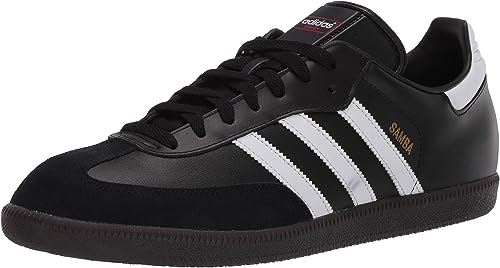In the heart of American football’s thunderous clashes and strategic plays lies an often overlooked element that can sway the tide of a game – the playing field itself. The conditions of the field, be it wet, dry, muddy, or artificial turf, play a significant role in how the game unfolds. Amidst this unpredictable chaos, linemen – the unsung heroes of the sport – rely on a critical ally to find their footing: their lineman cleats. These specialized pieces of equipment are more than mere footwear; they are the linemen’s lifeline in the face of ever-changing field conditions.
Grip and Traction: The Battle Against Slippery Surfaces
One of the most tangible impacts of varying field conditions is the grip linemen can maintain on the ground. In wet or muddy conditions, the field becomes a slippery challenge, making it difficult to gain traction during explosive movements. This is where lineman cleats come to the forefront as indispensable tools.
Lineman cleats are engineered with specialized sole patterns and studs that adapt to different conditions. In slippery conditions, longer and more spaced-out studs dig deeper into the ground, providing linemen with the traction necessary to push forward or anchor their position. This strategic advantage allows linemen to maintain control even when the field beneath them resembles a quagmire.
Adapting to Synthetic Turf: A Different Challenge
While natural grass fields have their own set of challenges, the rise of synthetic turf introduces a different playing surface altogether. Synthetic turf offers consistent footing and can drain water more efficiently, reducing the impact of muddy conditions. However, it comes with its own set of challenges, such as increased friction and potential abrasion.
Lineman cleats designed for synthetic turf feature shorter, more numerous studs that ensure grip without causing excessive stress on the player’s feet. The materials used in these cleats also need to be carefully selected to withstand the abrasive nature of synthetic turf while providing the necessary comfort and support.
Swapping Cleats: Adaptability in Action
One of the remarkable features of modern lineman cleats is the adaptability they offer. Many cleats come with interchangeable stud systems that allow linemen to swap out studs of varying lengths and configurations based on the field conditions. This versatility enables linemen to fine-tune their cleats for optimal performance, regardless of the challenges presented by the playing surface.
Whether it’s screw-in studs for muddy fields or shorter studs for synthetic turf, this adaptability empowers linemen to customize their footwear to the conditions at hand. This not only enhances their grip and stability but also instills a sense of confidence that they are well-equippe to navigate the challenges that lie ahead.
Impact on Performance and Confidence
The effect of lineman cleats on field conditions goes beyond mere physical attributes. The grip and stability these cleats provide directly impact a lineman’s performance on the field. Secure footing enables linemen to exert force confidently, execute quick movements, and respond effectively to opponents’ actions. Linemen who are assure of their footing are more likely to perform at their peak, influencing the outcomes of crucial plays and pivotal moments.
Additionally, the psychological impact cannot be understat. Linemen who have faith in their cleats feel a heightened sense of confidence and control. This psychological advantage can influence decision-making, aggressiveness, and overall demeanor on the field. A lineman who is confident in his cleats is more likely to embrace challenges, take calculated risks, and seize opportunities that can shift the momentum of the game.
Innovation and Evolution: Pushing the Boundaries
The relationship between lineman cleats and field conditions is an ongoing area of innovation. Cleat manufacturers continually push the boundaries of design and technology to provide linemen with tools that excel in any scenario. As the understanding of materials science, biomechanics, and sports performance deepens, so does the potential for creating cleats that adapt even more seamlessly to varying conditions.
The future may hold cleats with advanced adaptive technologies that can sense and adjust to the specific field conditions in real-time. Embedded sensors and micro-adjustments could become commonplace, allowing linemen to maintain optimal grip no matter how the conditions evolve during the course of a game.
Conclusion
In the unpredictable world of American football, where field conditions can vary from pristine grass to muddy battlegrounds, lineman cleats emerge as a linchpin in a lineman’s performance. These specialized pieces of equipment are not just tools for footing; they are the linemen’s strategic advantage amidst the chaos of changing environments.
From ensuring grip on slippery surfaces to adapting to synthetic turf, best football cleats for wide feet are engineered to provide the stability, traction, and confidence needed to navigate the field’s challenges. As technology advances, lineman cleats will continue to evolve, becoming even more finely tuned instruments that empower linemen to excel in any setting. So, the next time you watch the linemen charge into the fray, take a moment to appreciate the precision engineering that helps them find their footing amidst the chaos.




